JUNE 2019
Full Frame cameras for wide field astroimaging.
[This is just one of many articles in the author’s Astronomy Digest.]
In the last few years, full frame (FX) cameras have become more affordable and should now be seriously considered for use in taking wide field images of the constellations and Milky Way. Such cameras are of two types: ‘DSLRs (Digital Single Lens Reflex) or, becoming increasingly popular, ‘Mirrorless’ cameras that are sometimes called ‘Compact System Cameras’.
Comparing APS-C sensors with a full frame sensor one finds that Canon APS-C sensors have an area of 329 sq mm, Nikon APS-C sensors 368 sq mm and full frame sensors 864 sq mm. So a full frame sensor will have over twice the area compared to an APS-C sensor and so should, in principle, be able to collect more light so giving lower noise images for a given exposure.
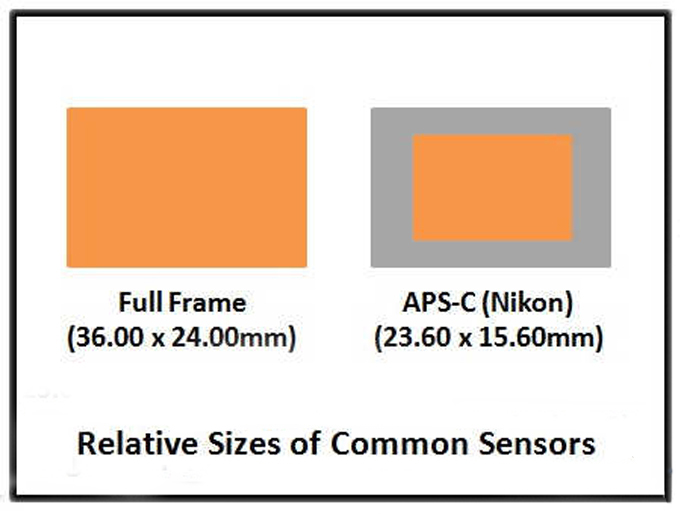
However often, but not always, a bigger sensor will include more pixels so the area per pixel may not be much greater. There seems to be a consensus that, for astrophotography use, a pixel count of no more than about 24 megapixels is optimum so the very high resolution (and expensive) cameras will not be covered in this article. However, one would often not even then need the resolution provided by a full frame camera with 24 megapixels, and by reducing the image size after processing by half in both axes, so giving a 6 megapixel image, each resultant pixel would be the average of 4 pixels and so should improve the noise in the image by a factor of 2. (I am not totally convinced by this due to the sensor’s 4-pixel Bayer matrix but there should be some improvement.)
The noise level in sensors has improved over the years and the table below gives a measure of the dark current noise produced in the sensors of several cameras that I own. Each was evaluated from a 30 second dark frame taken with an ISO of 200 at room temperature.
Nikon D80 APS-C (2006) 10 megapixels 1.3
Nikon D7000 APS-C (2010) 16 megapixels 1.8
Canon 1100D APS-C (2011) 12 megapixels 13.0
Nikon D610 FX (2013) 24 megapixels 0.8
At the time of its introduction, the Sony sensor in the D7000 was regarded as the best APS-C sensor in production and I have used it to take many astrophotos. The website DxO evaluates camera sensors and, even though a few years old, the sensor in D610 is still one of the very best.
Tilting Screens
For astrophotography use, a tilting screen has two major advantages: it makes it easier to frame an area of the sky which is high overhead and, when moved away from the back of the camera, produces a shorter heat path from the camera electronics to the outside air so helping to keep the sensor cooler and hence reducing what is called the ‘dark current’ which introduces noise into the images. It might also allow a small ice pack to be held against the back of the camera so reducing the sensor temperature even further.
H-alpha Sensitivity
In many of the most beautiful astrophotographs one can observe the deep red colour emitted by excited hydrogen. Sadly, due to the infrared cut off filter placed in front of the sensor which has a gentle slope across the red part of the spectrum to give images that correspond to that seen by eye in daylight, the camera’s sensitivity at the H-alpha line is reduced to about one quarter. Thus features, such as Barnard’s Loop in Orion and the North America Nebula in Cygnus do not show up as well as they might. The diagram below shows a typical filter curve with the location of the H-alpha line. [It appears that the Filters used in Nikon cameras allow a little more H-alpha emission to pass.]
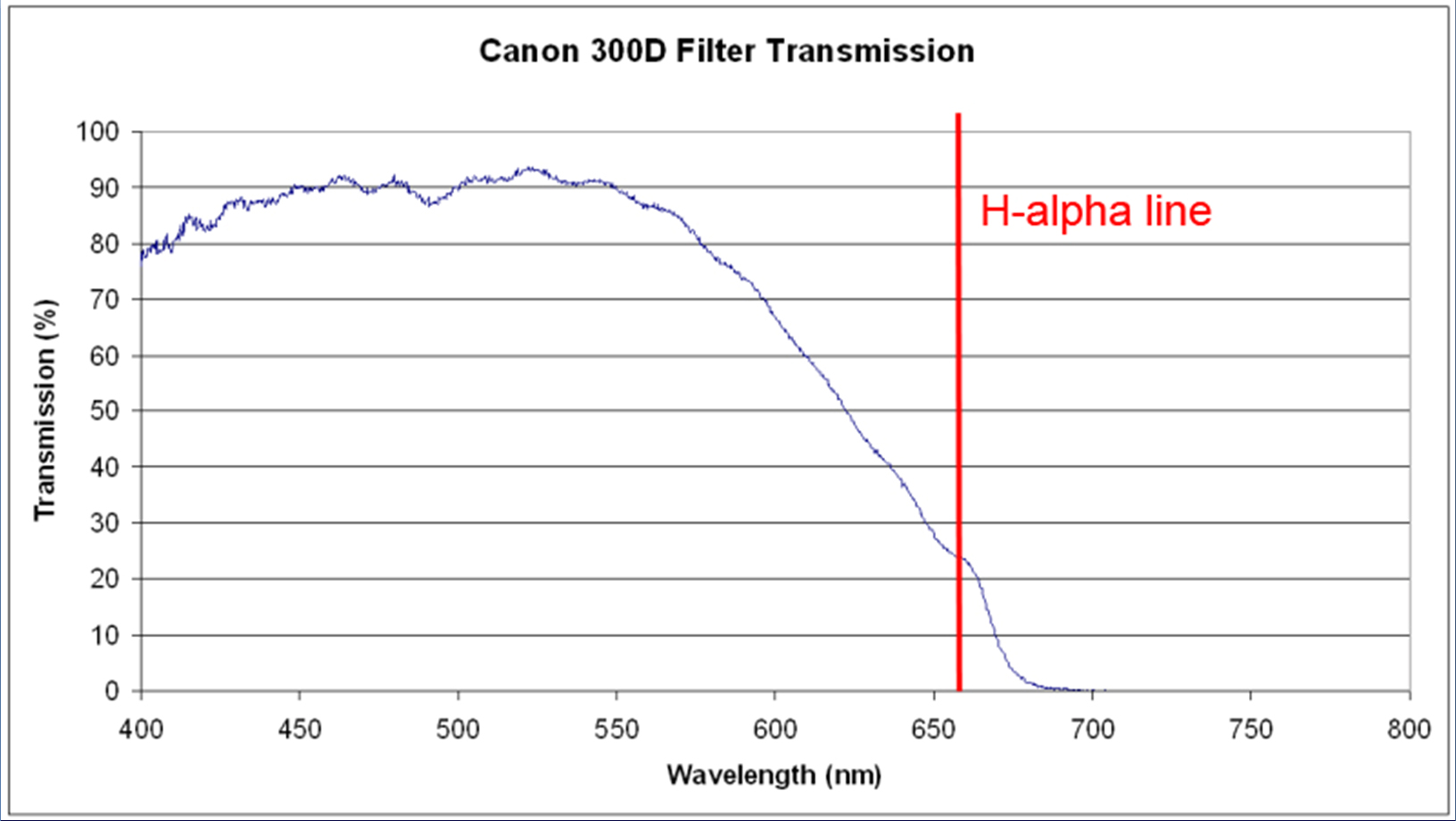
Particularly if a camera is to have its main use for astrophotography, it is possible for the cut off filter to be replaced by one which gives no reduction in sensitivity across the red and deep red part of the spectrum so allowing the H-alpha line to pass unhindered and then has a very steep cut off to the infrared part of the spectrum. The diagram below shows the filter characteristics of the Baader filter which can be used to replace the filter initially used in the camera. The filter replacement is quite a delicate process and is perhaps best to leave to one of the many companies that provide this service.
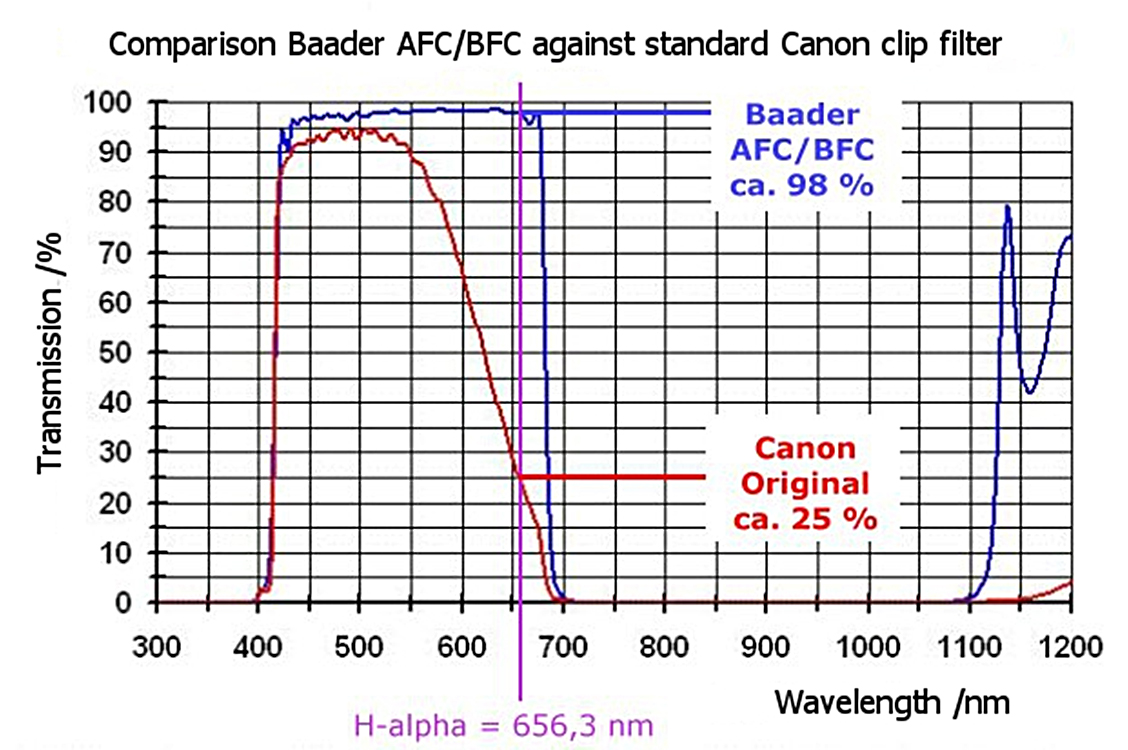
If such a modified camera were to be used for day to day photography set to, for example, ‘Daylight’ white balance, the resulting images would show an excess of red. The use of ‘Auto’ white balance attempts to correct this, but it is far better to use the ‘Custom’ white balance which can be set having photographed a white or light grey card in daylight. Should this not be used a Photoshop filter in the free ‘DeepSkyColors.com’ set called ‘WhiteCal’ can be used after first selecting an area of the image that should be white. This will attempt to correct the colour balance in much the same way as using a custom white balance. Thus a modified camera can be used for day to day photography. It has to be said that the noise levels of the latest sensors are so low that, by lifting up the red channel is post processing, the H-alpha line will become more prominent without increasing the noise level too much. A modified filter may, no longer, be needed.
DSLRs
The main manufacturers of FX DSLRs are, of course, Canon, Nikon, Pentax and Sony (though Sony now tend to be concentrating on their mirrorless cameras). For some years Canon DSLRs were favoured by astrophotographers as it appeared that the Nikon cameras carried out some noise reduction on the raw files (nominally the direct output from the sensor) which removed faint stars from the image. I do not believe that this has been the case since the introduction of the Nikon D7000 series so this is no longer a problem. There is, however, one big difference between the current Canon Sensors and those in the Nikon cameras (made by Sony) and Sony’s own cameras. The Sony Sensors are said to be ‘ISO invariant’ so that it does not matter too much what ISO is chosen. This can help by using a low ISO when there is a high dynamic range in an image such as the Orion Nebula, M42, and the Milky Way. The Canon sensors are only ISO invariant over smaller ISO ranges. I am not sure that this is a major issue and if you have a Canon DSLR system it would certainly not be worth changing to Nikon or Sony.
The two Nikon cameras best suited for astrophotography are the D750, which has a tilting screen, and the cheaper D610 which does not. Both have a similar 24 megapixel, ISO invariant, sensors.
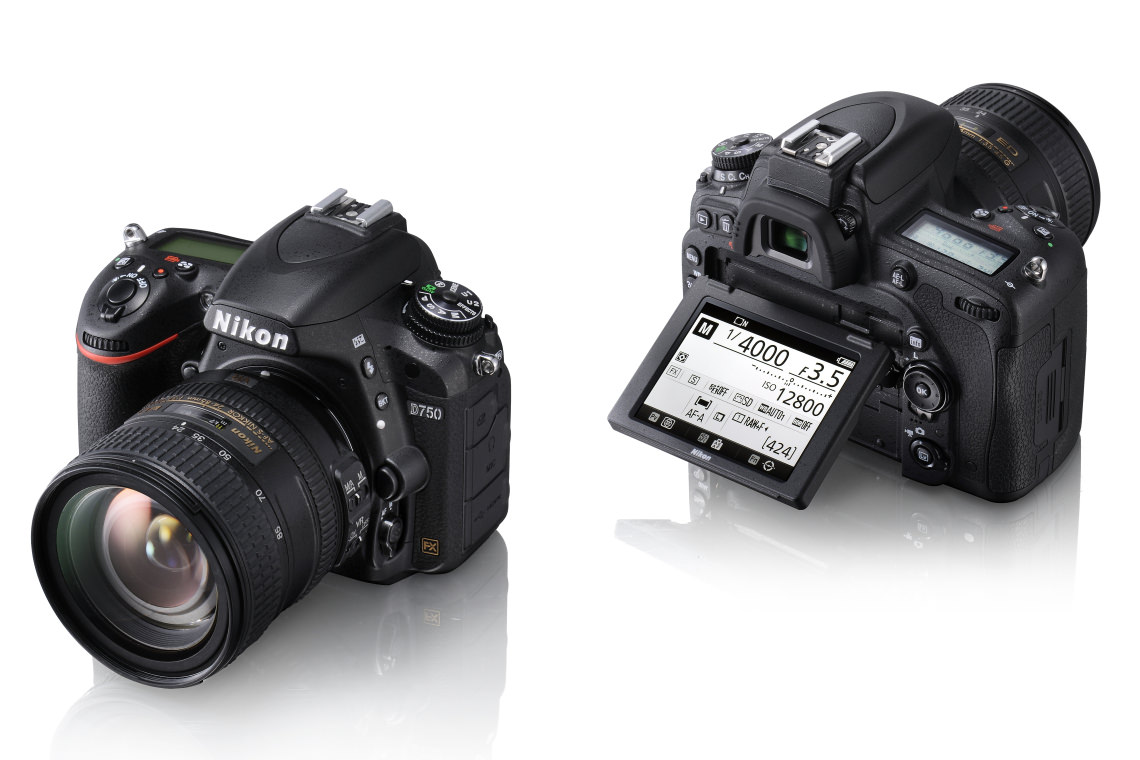
A full frame Canon Camera which is very highly regarded for astrophotography use is the Canon EOS 6D Mk II which has a tilting screen that moves well to the side of the body and can also rotate – excellent for framing high elevation constellations.
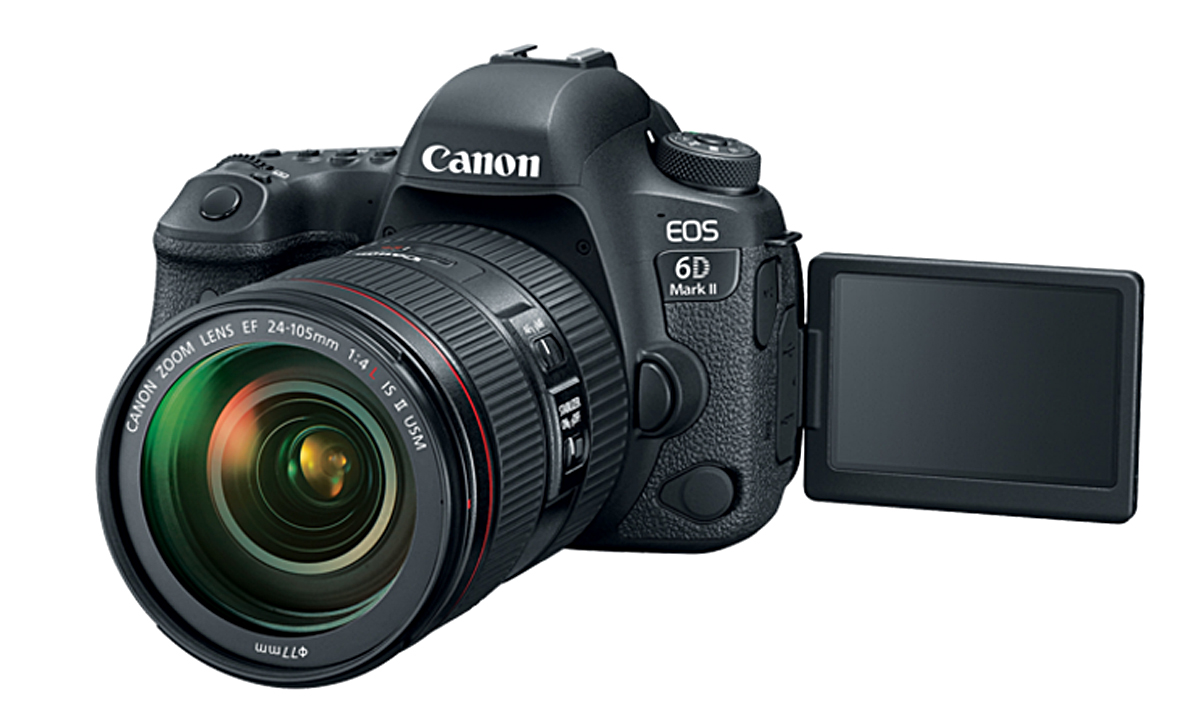
The Sony SLT A99, 24 megapixel, camera though dating from 2012 can still be obtained new. It does not have a mirror box but, instead, a fixed semi-transparent mirror reflects some light to the focussing array but passes the majority to the main sensor. An electronic viewfinder, EVF, as found on mirrorless cameras is used to frame the images and it has a tilting screen. Its, very expensive replacement, the SLT A99 II, has a 42 megapixel back-illuminated sensor! With such a high resolution it is perhaps not best used for astrophotography but reducing the resolution by 2 in each axis after processing will give a ~10 megapixel image with reduced noise.
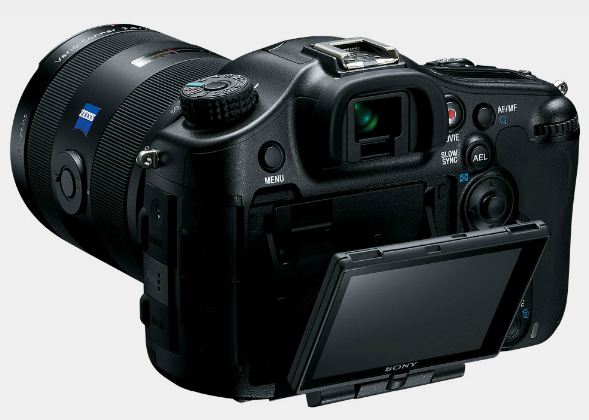
Pentax’s full frame DSLR is the, very expensive, K1 Mark II camera having a resolution of 36.4 megapixels and a tilting screen. The camera has a rather amazing trick called its ASTROTRACER mode. When employed, the camera uses the sensor-shift mechanism in conjunction with its built-in GPS sensor to track stars across the sky so preventing star trails! The length of the exposure is obviously limited as the sensor shift mechanism can only move the sensor a limited amount but it does mean that star fields can be captured without the need for a motorised mount. [The sensor shift mechanism can also used to combine four images shifted by one pixel to better sample the sensor data to capture red, green and blue data from each output pixel without having to deBayer the sensor output. Very Clever.]
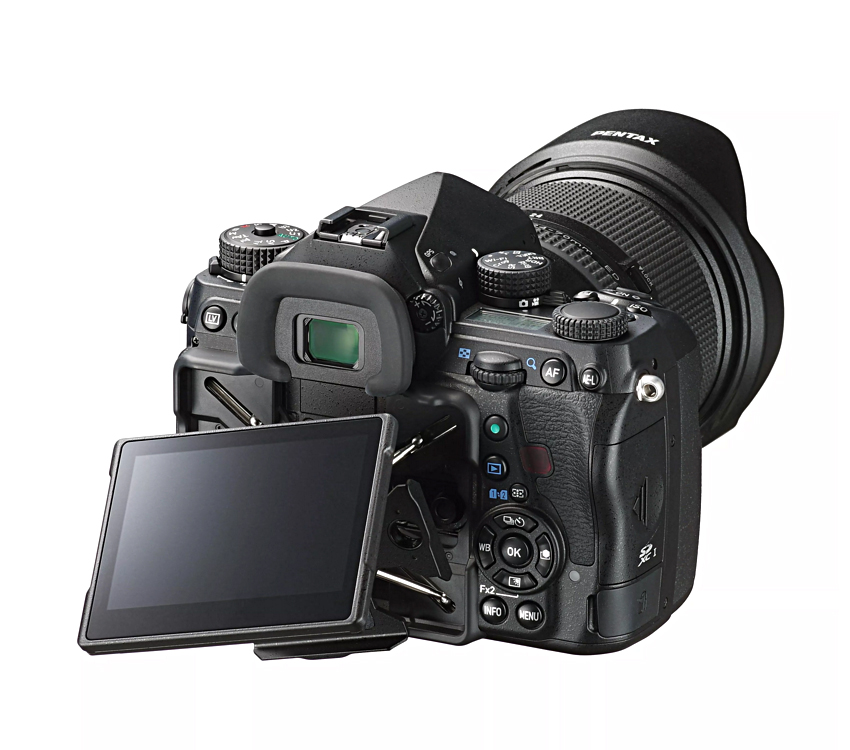
Full Frame Mirrorless Cameras
For some time, Sony were the only manufacturer to produce full frame mirrorless cameras but they have now been joined by Nikon, Canon and Panasonic. They are, however, quite expensive and cameras with the smaller MFT and APSC sensors might well be a better purchase.
For some time Sony cameras employed a noise reduction algorithm on the raw files which removed the faintest stars − called the ‘Sony Star Eater’ problem when long exposures were used (> 3.5 seconds). Following much representation from astrophotographers this problem now appears to have been resolved. Their expensive Sony A7 III full frame camera sports a ‘back illuminated’ sensor to improve noise performance and an articulating screen (though not as versatile as those on the two Canon cameras). Tests made by ‘PetaPixel’ show that there is no longer a Star Eater problem and this is confirmed by Alan Dyer (The Amazing Sky). His comparison exposures indicate similar (but, surprisingly, not better) noise performance to the Nikon D750 but better than the Canon EOS 6D Mk II DSLRs. An interesting feature is that it can be charged over its USB connection from one of the many ‘power banks’ now available whilst being used. A great feature for night time imaging!

Nikon have produced the Nikon Z6 which has a 24.5 megapixel back-illuminated sensor. Tests, for example by Alan Dyer (The Amazing Sky), have shown that is an excellent camera for astrophotography use with a noise performance slightly better than the Nikon D750 DSLR. One minor problem is that, currently, there are few prime lenses for use with it. The new, wide throat, lens mount and short flange distance give the optical designers great flexibility and the new lenses for the Z6 are some of the best ever designed by Nikon. This includes the Z-mount 35mm f/1.8 prime lens that would be very suitable for astrophotography. To help ‘ease’ Nikon users into the new system, the Z6 is currently sold with an FTZ mount adapter that will allow Nikon’s DLSR F-mount lenses to be used with it. One point to note is that it has a single port for the new XQD memory card types which are currently rather expensive and these will need a dedicated card reader to import images into a laptop or PC.
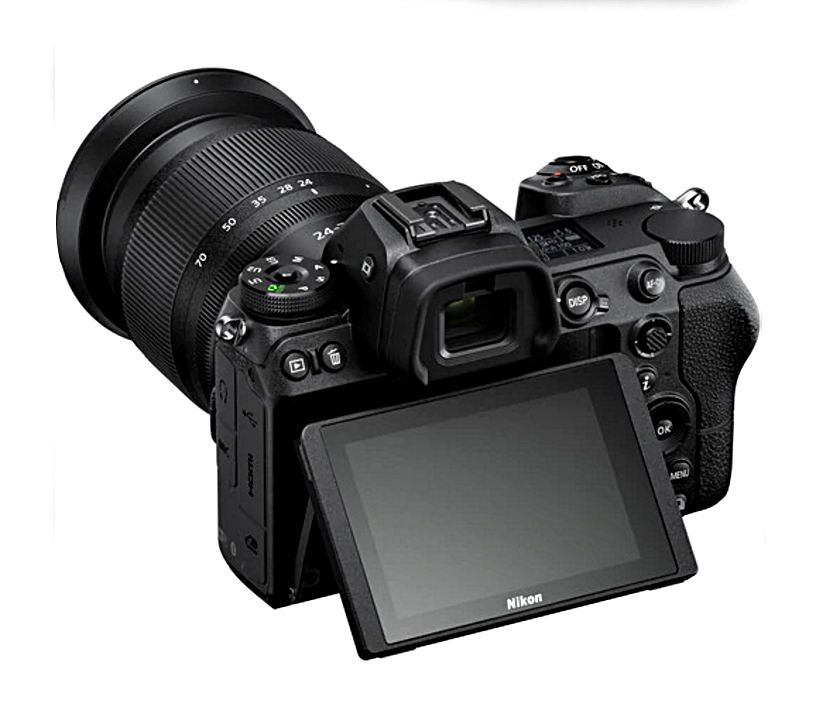
Canon have produced the Canon EOS R having the 30.3 megapixel sensor that is similar to that used in the EOS 5D Mark IV coupled to the new RF mount. It sports a fully articulated screen. Tests by DP Review indicate that its dynamic range and noise performance ‘lags a little behind’ its rivals. It does, however show ISO invariance from ISO 400 and above indicating that it might be better to use ISO 400 rather, than say, ISO 6400 and then lift the darker regions of an image in post processing thus giving a greater effective dynamic range. Good. The new RF lenses are of very high quality and adapters are available to mount previous Canon mount lenses.
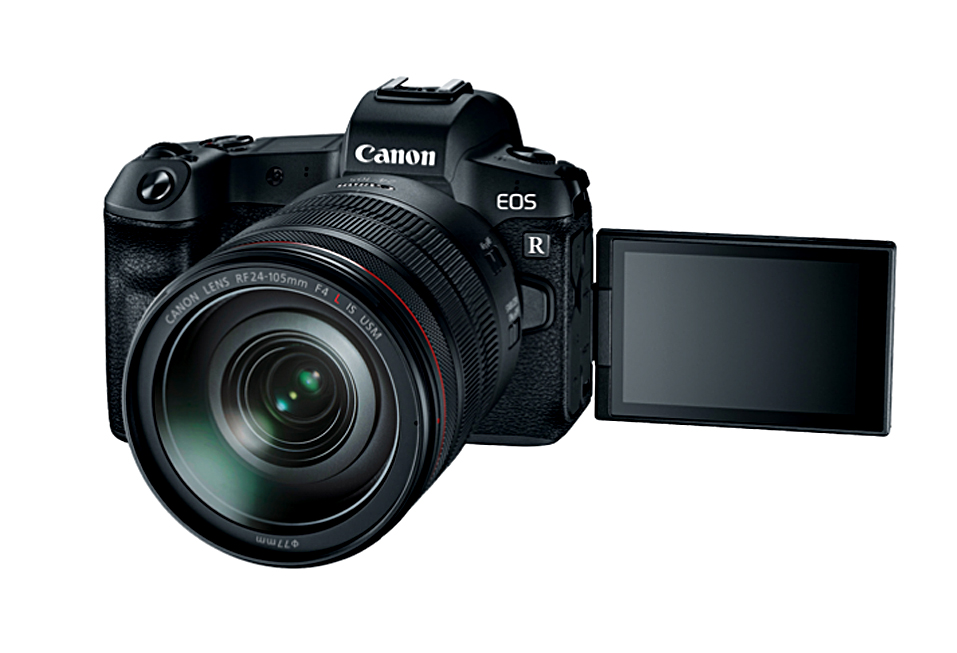
Panasonic have introduced a range of full frame mirrorless cameras of which that is perhaps the most suitable for astrophotography is the S1 having a 24.2 megapixel sensor. It is somewhat bigger than the Nikon Z6 or Sony A7 III. It has an articulating screen and two card slots, one for SD and one for XQD cards. It uses the Leica L-mount along with Leica and Sigma so that the number of compatible lenses should become available more quickly than the other lens mounts. Tests by Digital Camera World indicate that its sensor has a greater signal to noise ratio than its rivals whilst its dynamic range is a little less that the Sony A7 III and comparable to the Nikon Z6 and Canon EOS R. The sensor appears to be ISO invariant as with the Sony and Nikon cameras. It has an articulated screen. The S1 is a superb camera though, at the time of writing, is the most expensive of the FX mirrorless cameras.
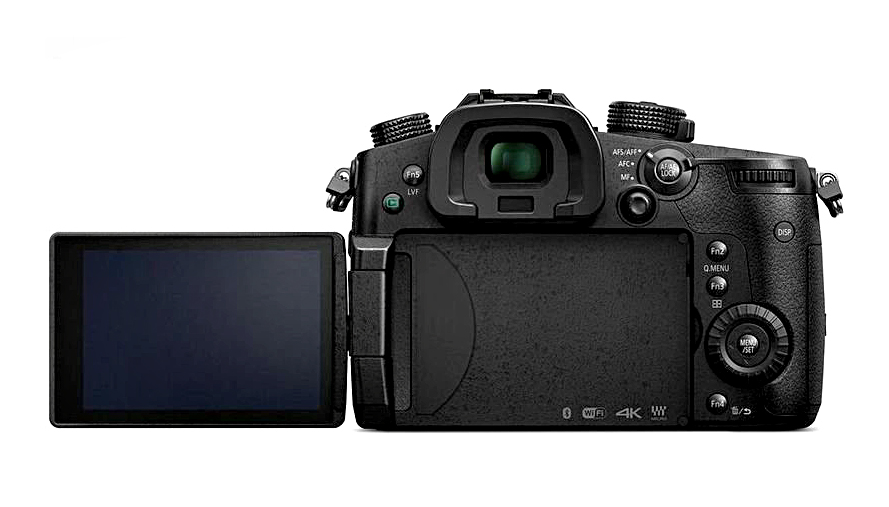
Buying Second Hand
To reduce the cost of moving to an FX camera one can consider buying second hand copies of the Nikon D750 and D610 or the Canon EOS 6D. In the UK several companies such as ‘Camera Jungle’, ‘mpd.com’, ‘Clifton Cameras’ and ‘WEX cameras’ sell these with ‘excellent’ or ‘mint’ versions costing from around £639 and £685 for a D610, £917 and £979 for a D750 and around £1,000 for a Canon EOS 6D II. Having said that, new bodies can be found for prices that are not that much greater, but some may be ‘grey’ imports so care is needed. [At the lowest cost to purchase an FX DSLR one can sometimes buy the Nikon D600 which is virtually the same as the D610 but with a shutter having a somewhat shorter life. I have seen an ‘as new’ copy for just £529]
It is possible to purchase second hand copies of mirrorless cameras but the only one that has been on sale for a while is the Sony A7 II. ‘Excellent’ second hand copies are available for around £750. Ass mentioned above, there has been a ‘Star Eater’ problem with Sony cameras which apply some special filtering to raw files before saving thus removing some of the fainter stars. This may affect ‘Bulb’ exposures in the A7 II but using exposures of up to 30 seconds should not be a problem.
Conclusion
If one has a collection of lenses for the Nikon or Canon cameras, then this would be a very good reason for sticking with the mark. The Sony already has a great following and, in time, I suspect that so will the Panasonic. Here I have only really considered their use for astrophotography, but these cameras are now often used for taking high quality videos so the choice may depend on other factors. Very full reviews for all four mirrorless cameras can, of course, be found on the web. Bringing up the individual web pages relating to these cameras one can find many user reviews which can help making a good purchase. I removed one camera from this article due to a number of negative reviews.
I suspect that improvements in sensor design are beginning to reach their limit and, in preparing this review, have been somewhat surprised that the performance of these later cameras is little better than that of the Nikon D750 which dates from 2014. (Or, with a similar sensor, the lower cost D610.) Currently, these would both be a cheaper alternative enabling one to embrace full frame astroimaging. I would not currently wish to upgrade from my D610 to any of the more modern DSLR or mirrorless cameras.